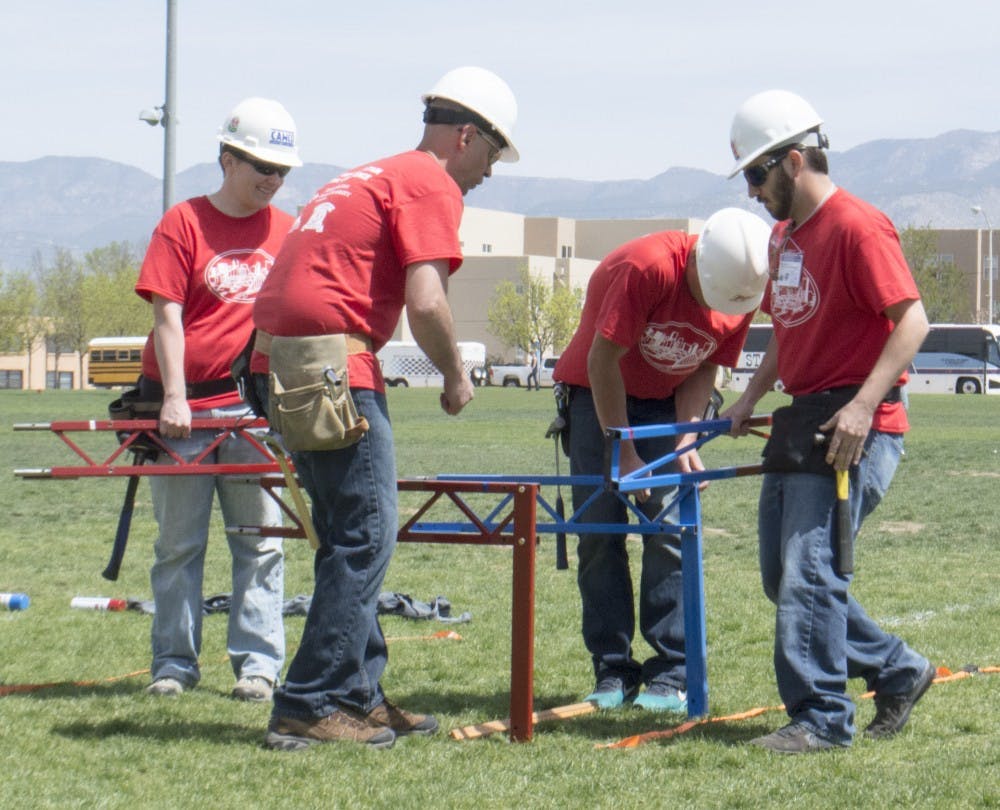Eleven of the 14 schools participating in the conference, hosted by UNM, presented canoes, which were displayed on Johnson Field on Friday and then raced on Saturday at Cochiti Lake.
NMSU, South Dakota School of Mining and Technology and Utah State won the first, second and third spots, respectively. Members of the NMSU team were awarded with a $9,000 scholarship.
“These races included a men’s (200m), women’s (200m) and coed sprint (400m) and a men’s and women’s distance race (600m), according to the organizers,” said Wesley Meyer, a UNM concrete canoe project manager and one of the conference planners.
According to the ASCE officials, the competition provides civil engineering students an opportunity to gain hands-on, practical experience and leadership skills by working with concrete mix designs and project management.
The history of concrete canoe in the United States began in 1960s, when a few ASCE student chapters began holding intramural races, according to the organization’s website. However, the first ASCE National Concrete Canoe Competition was held in 1988.
“This competition has grown nearly every major university with a branch of the American Society of Civil Engineers (ASCE) to have a canoe team,” Meyer said.
The competition was later extended to a steel bridge competition, in which teams race against time to build a modular bridge across a causeway, he said. The bridge is then loaded with steel and checked for defection, he said.
The bridge competition for this year’s conference was located at Johnson Field. Each team had to build a single 20-foot span girder or truss-style bridge, he said.
“These were miniature versions of the real deal, and the test was to see how quickly and economically a school can design and build a bridge,” Meyer said. “The more your structure weighs the more expensive it was to construct, and if the bridges deflect more than an allowed amount, the bridge will stop being loaded for safety reasons.”
The general spirit of this competition is one of learning from mistakes, he said.
He said the competition tests the team’s project management skills and it is a true engineering feat to be able to score high in all of the judging categories.
Get content from The Daily Lobo delivered to your inbox
“In the University, most departments are secluded in their own world, and this is a great opportunity for other disciplines to be able to see what civil engineering is all about and brings attention to our discipline,” he said.
The civil engineering students are able to meet different schools and see what they bring to the table, he said.
“Much pride is taken in a school’s performance, and the competition is both competitive and can reflect the school’s program. The greatest test that is given to students is being able to balance the school work in addition to constructing a bridge or canoe, which requires many man hours to complete successfully,” he said.
Sayyed Shah is the assistant news editor at the Daily Lobo. He can be contacted at assistant-news@dailylobo.com or on Twitter @mianfawadshah.






